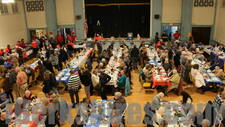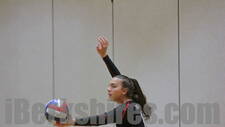Mojo ChronicleMark Mulherrin
12:00AM / Monday, February 12, 2007
 | | Artist and columnist Mark Mulherrin |
Welcome to Mojo Chronicle, a monthly column focused on the up-front and behind-the-scenes workings of the regional arts community and written by artist Mark Mulherrin.
In 19th century drama the expression "fourth wall" came into use as a term to describe the imaginary boundary between the audience and the dramatic fiction taking place on the stage.
The concept, however, had been played with long before there was a word for it. From Aristophanes to Shakespeare, whenever an actor, in an aside, spoke directly to the audience as part of the drama, the wall would be tweaked.
Should it happen that an actor dressed as Henry V said to the audience that he, not Henry V, had almost missed the opening curtain when the ATM down the block was broken and he had to walk to the theater because he didn’t have cab fare, the wall would then be thoroughly breached.
The stage has three walls; the fourth one is in your mind.
Almost as soon as the wall was described it became a strategy of
modernism to break through it, exposing the artifice beneath the
surface… This is a Play and These are Actors. The concept of this
imaginary wall between us and art forms and the ways that the wall can
be manipulated are so commonplace now as to escape our attention.
We notice it only when it is ruptured unintentionally through human or technical error; the flubbed line, the scenery falling down. It always brings life to the proceedings.
This idea has been well documented regarding the performing arts and literature. What I’d like to investigate a little is how this idea relates to visual art, because somehow, Shirley, it must.
A good point of entry into this maze might be found lurking in some
drawings at the Clark now, at the Claude Lorraine exhibit. Lorraine
appears to be an adequate but not great master whose proclivity for
painting romantic landscapes with nothing important going on in them (no Hannibal to be seen crossing those Alps) made him influential.
Among the shows' many drawings are several that depict a
lone artist on a hillside by a shady grove with the tools of his trade, working industriously, one would imagine, at drawing the very landscape in which he sits. I found myself pausing before these and getting caught in the grip of a conceptual loop de loop; a drawing of an artist drawing. It offered a glimpse into the complexity of applying the fourth wall to art.
I mean, who drew it? What was missing, I suppose, was the drawing of Claude himself drawing the guy drawing. At what point is the barrier of the fiction broken? Or has it been?
One of the fundamental precepts of painting is the physical absence of the artist as a performer save for what remains: the artifact the performance has generated, i.e. the painting. I’d say that the absence of the artist is part of the mystique of an art object.
When you look at art, your physical proximity to it is generally identical to the person who made it. You are there. Except at the opening parties of artists counted among the living, wherever the art is the artist is almost always elsewhere, untouchable. You aren’t allowed to touch the paintings either, though I must confess once I did touch the lead white nose of a Rembrandt self-portrait at the Met on an art school dare and lived to tell the tale.
Next stop on the fourth wall trail was WCMA [Williams College Museum of Art].
I had read in the paper that day about the Warhol exhibit and was curious to see it. After walking around the whole place (love the LaFarge) I couldn’t find it until one of my buddies popped out from behind a corrugated plastic door that said “gallery closed†and graciously bid me hence. I was in fourth wall heaven.
The show was almost installed but enough evidence of the process involved remained to make things interesting.
Now, museum staff see this everyday but even as an artist it is a hoot to see exhibits in the throes of their own construction with ladders and paper on the floor and the gray metal rolling carts heaped with archival boxes.
The plastic door through which I had passed was the fourth wall
of a museum space, breaking the artifice of an exhibit. I saw the thing you’re not supposed to know or notice, that this beautiful show was installed by actual human beings, and Andy wasn’t there to help.
The extraordinary popularity of recent events like the Open Studio
tours of North Adams last fall and the recent 100 Hours exhibit at MCLA Gallery 51 points to a fact that led me to think about this at all.
That is, people really want to see how artwork is made or at least see
the spaces in which this work might take place. It is easy for artists
to take for granted the mystery of what they do behind the wall. I read that 500 people came through the gallery during the four days of the collage-a-thon. As one of the artists working in there, it was not as uncomfortable as I would have expected but it was a little disorienting making art that way.
It was a breach in the wall.
On reflection, I would say that there is something for the audience to be gained by this. It demystifies and makes real to an extent the process of creating art. We’re just folks.
On the other hand when I finally learned how the magician pulls a rabbit out of his hat, the knowledge was gained at the expense of a pretty cool trick. |



















